Please note: Use Hearing Protection ended on 3 January 2022. To find out what exhibitions and activities are open today, visit our What’s On section.
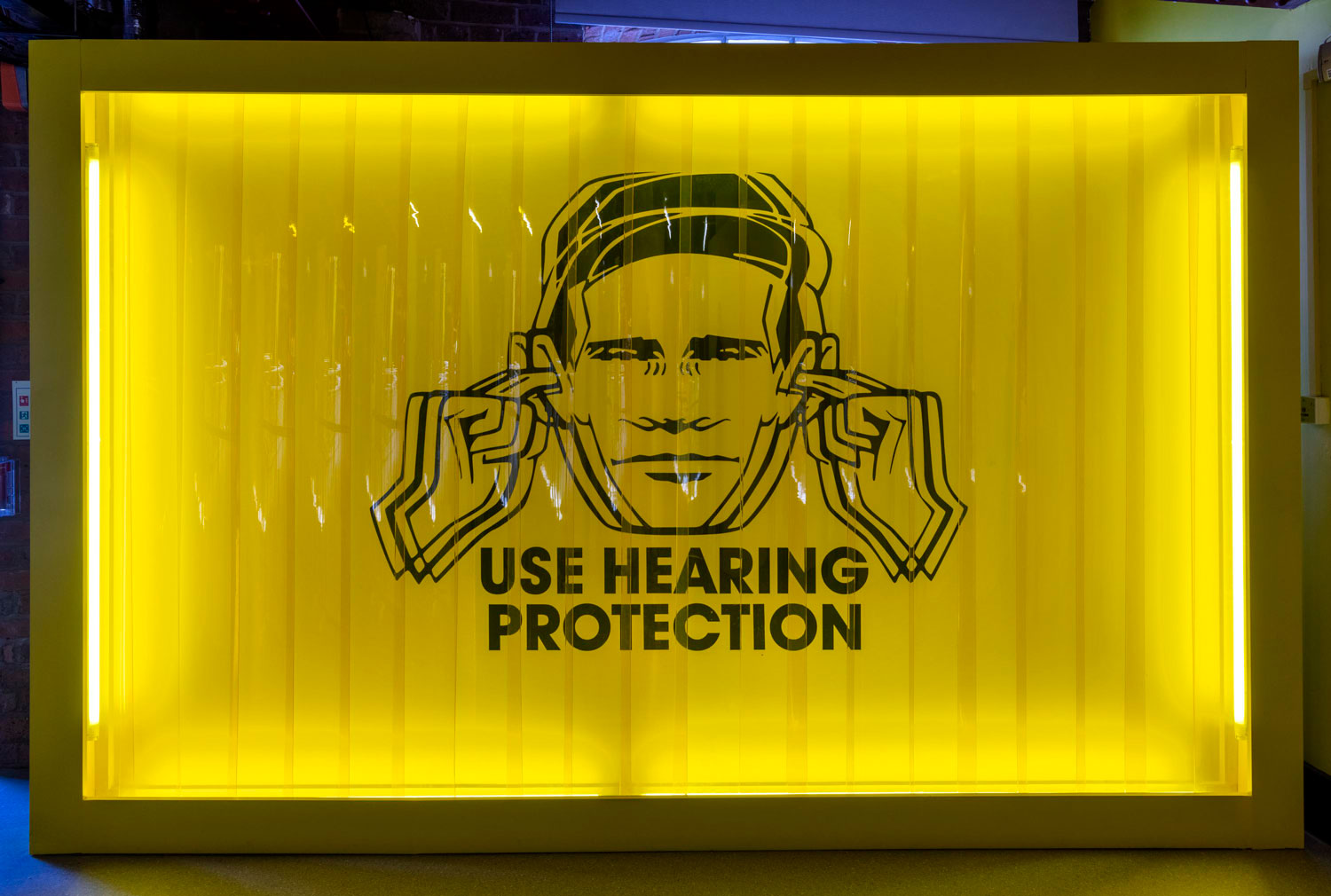
Science Museum Group © The Board of Trustees of the Science Museum
Use Hearing Protection: The early years of Factory Records covers the period 1978 to 1982, illustrated by the first 50 numbered artefacts in the official Factory Catalogue. The exhibition at the Science and Industry Museum grew out of the 40th anniversary celebration of Factory, an exhibition called Use Hearing Protection FAC 1 – 50 / 40, held at Chelsea Space, London, in autumn 2019. The anniversary derived from the first vinyl release on the record label, FAC 2 A Factory Sample. The exhibition itself could be said to be a Factory sample, bringing together as it did the evidence of Factory’s revolutionary cultural impact on the music, art, design and ideas of our times.
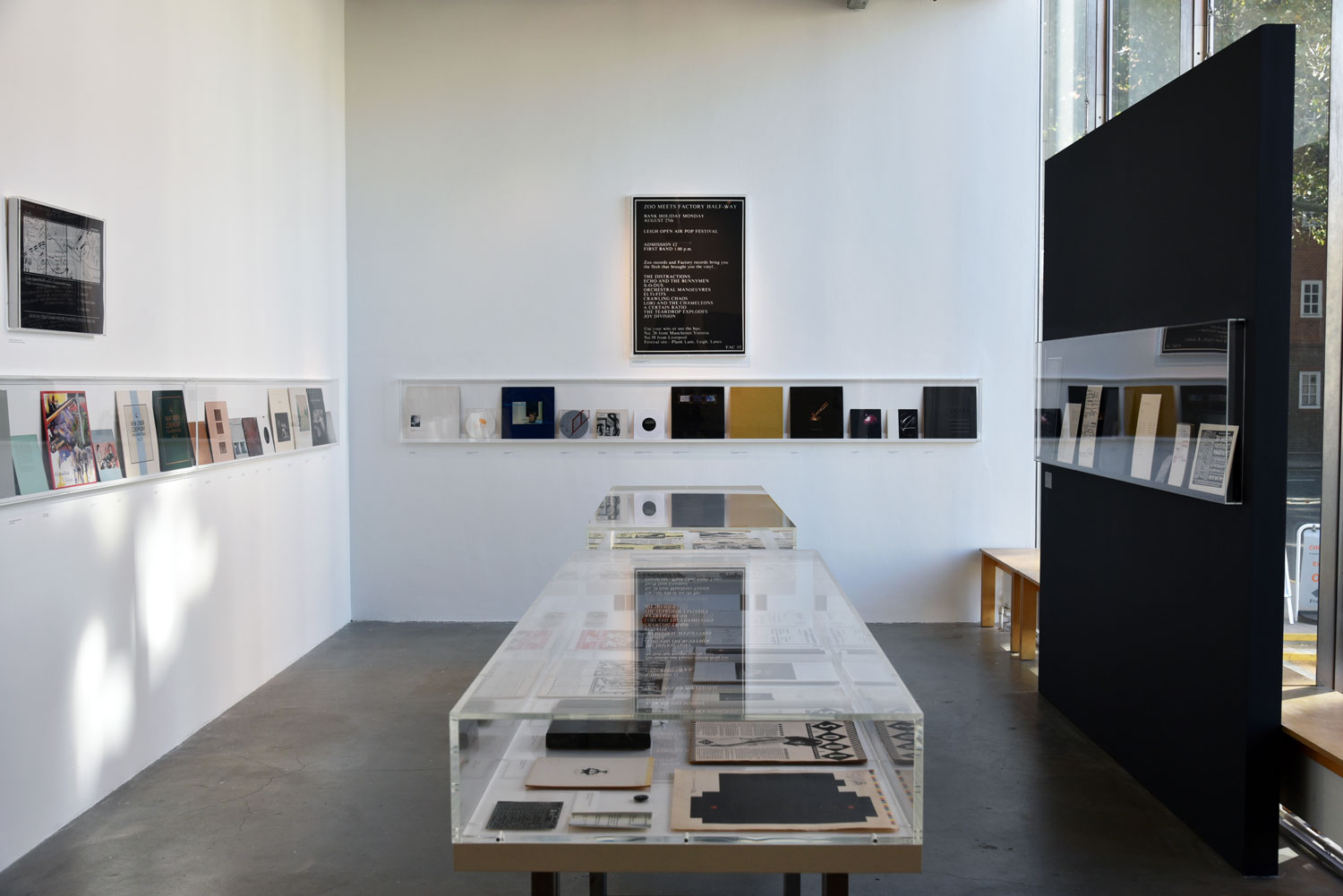
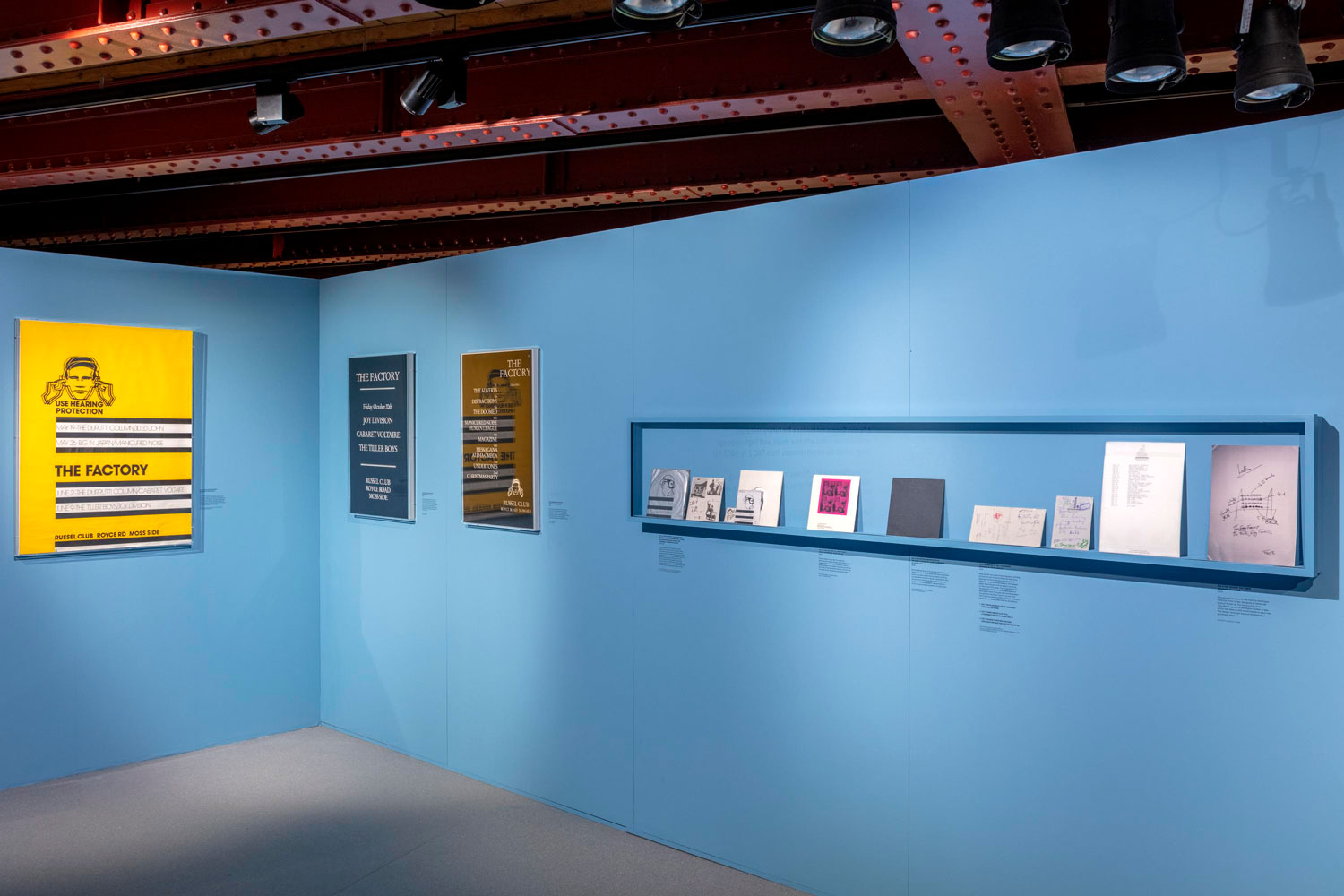
Science Museum Group © The Board of Trustees of the Science Museum
When Jon and Mat were originally approached about curating the 40th anniversary exhibition, they were aware that it wasn’t feasible to coherently encompass the whole of Factory’s output, story and influences in one single space. The original Factory story can be split quite neatly into three periods—1978–1982, 1983–1987 and 1988–1992—and Jon and Mat felt that the early years had been underexplored in exhibition. Those formative years were, in many ways, Factory at its purest. It is the period where the influences of punk and The Situationist International can be seen most clearly in the message and aesthetic of Factory, culminating with the opening of Manchester’s legendary club FAC51 The Haçienda.
The archives of key Factory figures Rob Gretton and Tony Wilson demonstrated the influence of punk and The Situationist International on both men, and showed how they projected this influence outward, in collaboration with the bands they worked with: Joy Division, Durutti Column, A Certain Ratio and New Order. Jon and Mat included items in the Chelsea Space exhibition that offered visitors an understanding of the importance of this influence on Factory Records.
In putting together the exhibition for the 40th anniversary, Jon and Mat used Factory’s numbering system to take visitors on a chronological journey from item to item. Presenting the items in this way allowed for an understanding of the energy and development of Factory and an appreciation of the varied and strong output in those impressive first four years.
During the content development process for the Chelsea Space exhibition, Jon, Mat and Jan talked about bringing the exhibition to Manchester. The museum has a collection of Factory Records archive material along with a recently acquired Joy Division collection from Jon. The family of Tony Wilson had also placed a significant Factory collection on loan with the museum, that Jon and Mat drew on for the Chelsea Space exhibition. For Jon in particular, it was exciting to think that what had been a small exhibition at Chelsea Space was going to be displayed in a much larger space at the Science and Industry Museum, with room to breathe and to expand strands in Factory’s history that are not often covered. Expanding the content to bring in more Manchester-specific stories and to examine the science and technology that underpinned Factory’s output was an opportunity for the museum to show that ‘pop’ archives aren’t just about the art, they are a marriage of art, design and technology.
The expanded content at the Science and Industry Museum took the Situationist International and punk elements of the Chelsea Space show and spun them to talk about how Tony Wilson and Rob Gretton embodied a late-20th century version of Manchester’s radical, non-conformist past. Objects were selected that told stories about Manchester’s built environment and industrial decline, and the way Factory harnessed the city’s past to deliver a new future, through the city’s emerging creative industries.
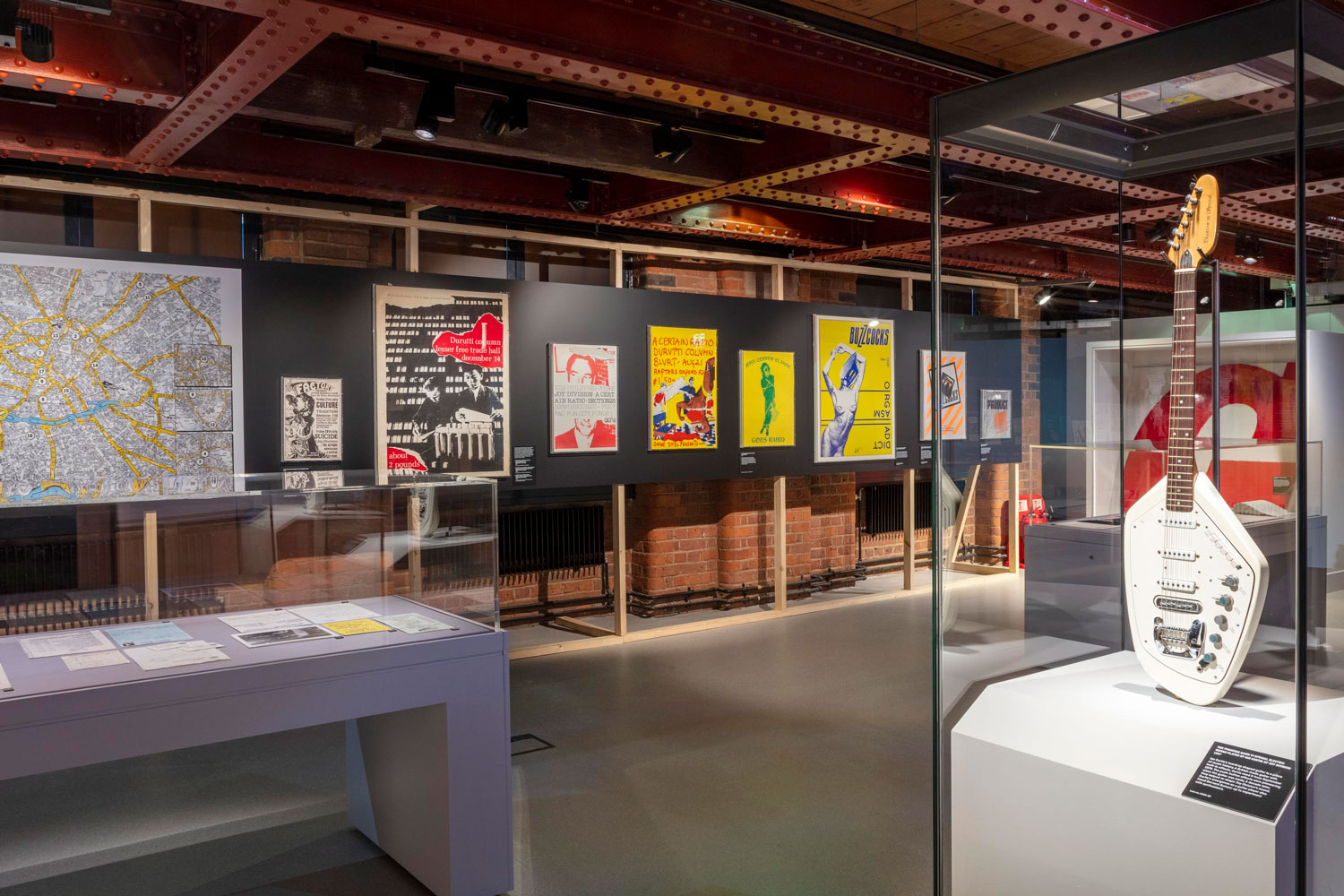
Science Museum Group © The Board of Trustees of the Science Museum
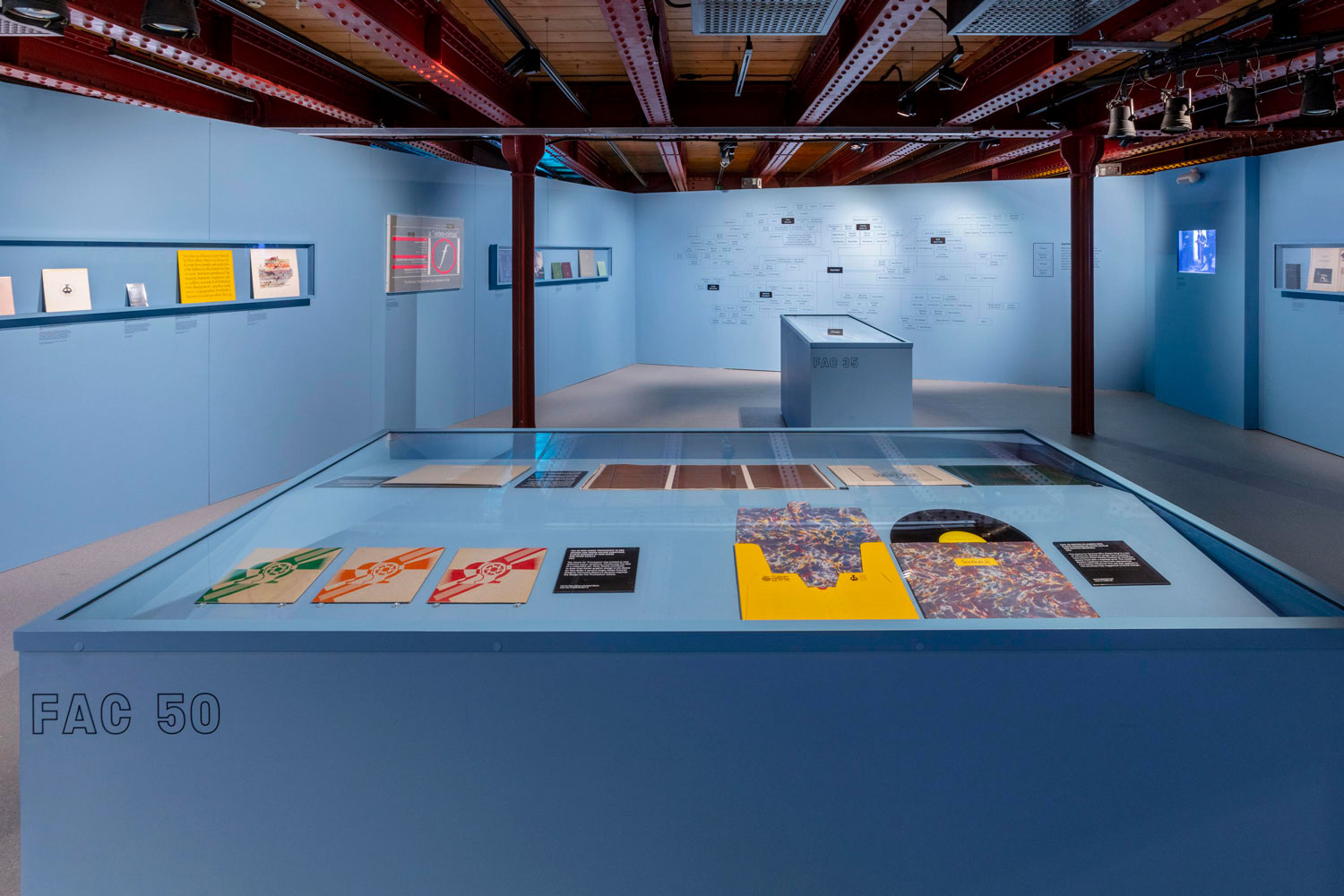
Science Museum Group © The Board of Trustees of the Science Museum
The design elements of the FAC 1–50 artefacts were given a Manchester context through stories about Peter Saville, Malcolm Garrett and the artist Linder as students at Manchester Polytechnic and as trailblazers of Manchester’s punk and post-punk visuals. Stories about the pioneering use of technology in the recording studio by Factory Partner Martin Hannett and by bands on the label demonstrated how Factory was at the forefront of emerging digital and electronic music technology. Among the amplified stories in The Street section of the exhibition, the women involved at the start of Factory received their due. And, against the backdrop of the global Black Lives Matter movement, it felt important to include a story of how Factory was involved in the Rock Against Racism movement in the late 1970s and early 1980s.
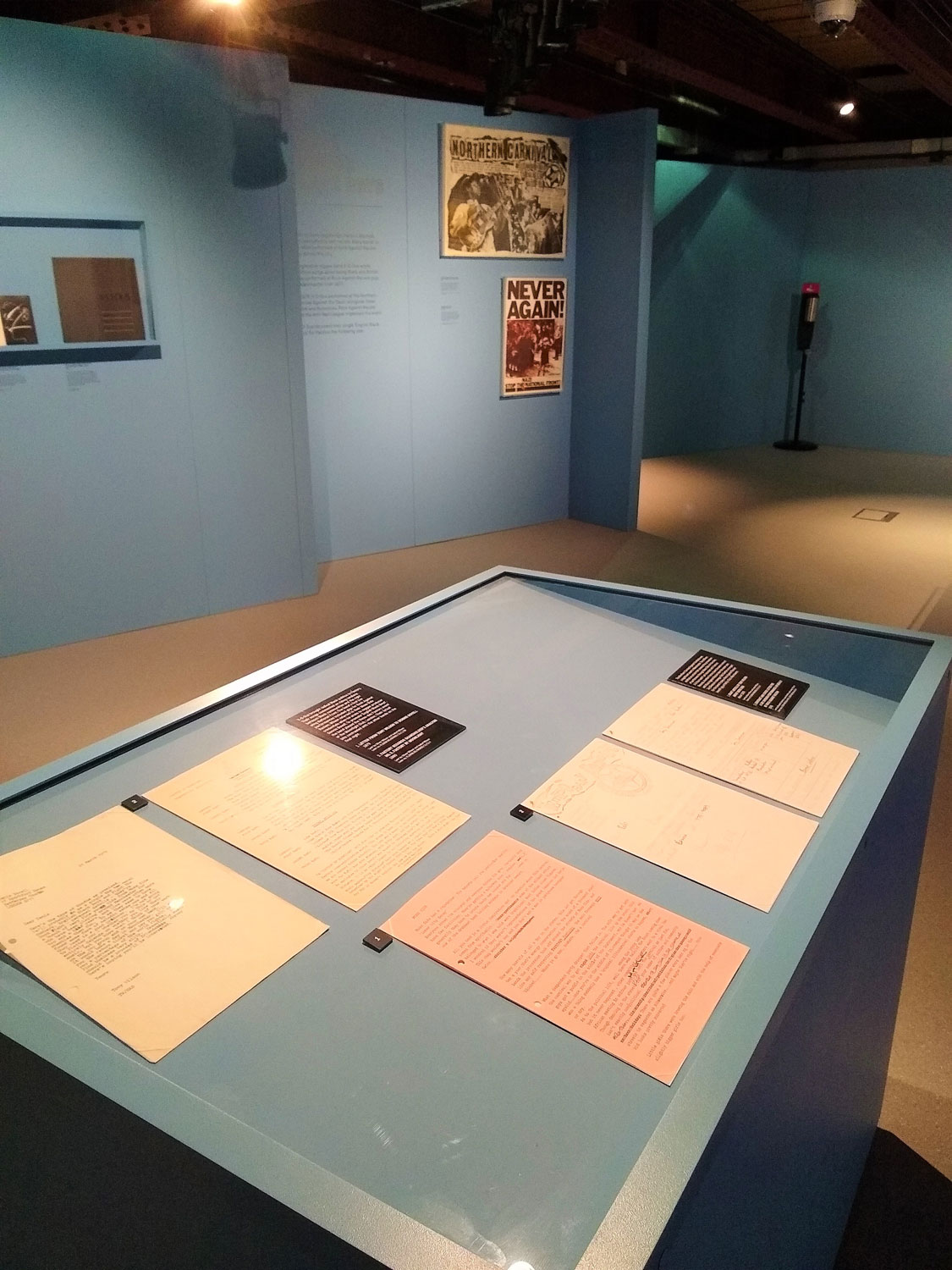
Science Museum Group © The Board of Trustees of the Science Museum
When the coronavirus pandemic interrupted the museum’s plans to open the exhibition in summer 2020, the exhibition team went back to the drawing board for some of the more interactive elements in the exhibition. The space that is now beautifully filled with images from the British Culture Archive was originally going to be an immersive musical experience for visitors, with the Unknown Pleasures pulsar waveform rendered in 3D and portable music players available to borrow so that visitors could listen to a soundtrack from the period of the exhibition. The practicalities of trying to keep such a space clean during a global pandemic meant that, instead, the museum worked with the British Culture Archive to expand its content. The result is a collection of images that touch on stories told elsewhere in the exhibition, showing Manchester’s built environment and the way music brings people together.
And what of the Haçienda? We knew that many of the exhibition’s visitors would expect the Haçienda to be represented. But the Haçienda was item 51 in the official Factory Catalogue, and outside the bounds of the Use Hearing Protection exhibition. As Ivan Chtcheglov put it, ‘You’ll never see the hacienda. It doesn’t exist. The hacienda must be built’. Instead of expanding the exhibition content to directly include Factory’s most famous product, design played its part in tipping a wink to what followed on.
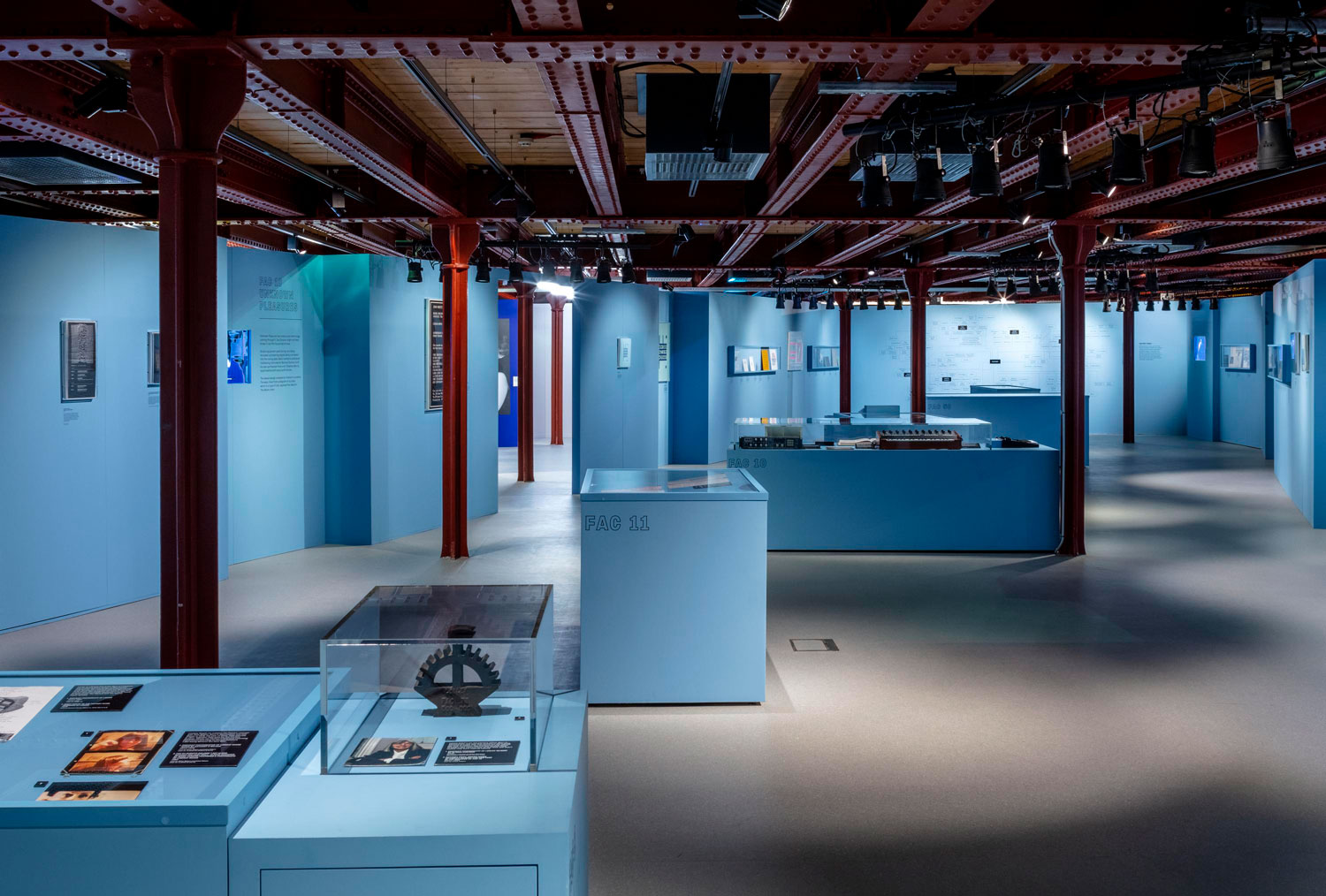
Science Museum Group © The Board of Trustees of the Science Museum
The exhibition design was delivered by Manchester design agency Modern Designers, but to ensure the look and feel was right, Ben Kelly came on board as a creative director. Ben brought with him his own personal Factory history, as a designer of record sleeves for the label and, more significantly, as the architectural designer of buildings and spaces that include the Haçienda, Dry and the Factory HQ. Design elements from the Haçienda, such as the pigeon blue of the walls and the lighting rigs in the main gallery space and the mini-representation of the club as visitors leave the exhibition, helped the museum to acknowledge that a large part of Manchester’s music history was absent from the core of the exhibition. For the exhibition team, it also acted as a spur to think about a follow-on exhibition. Watch this space.
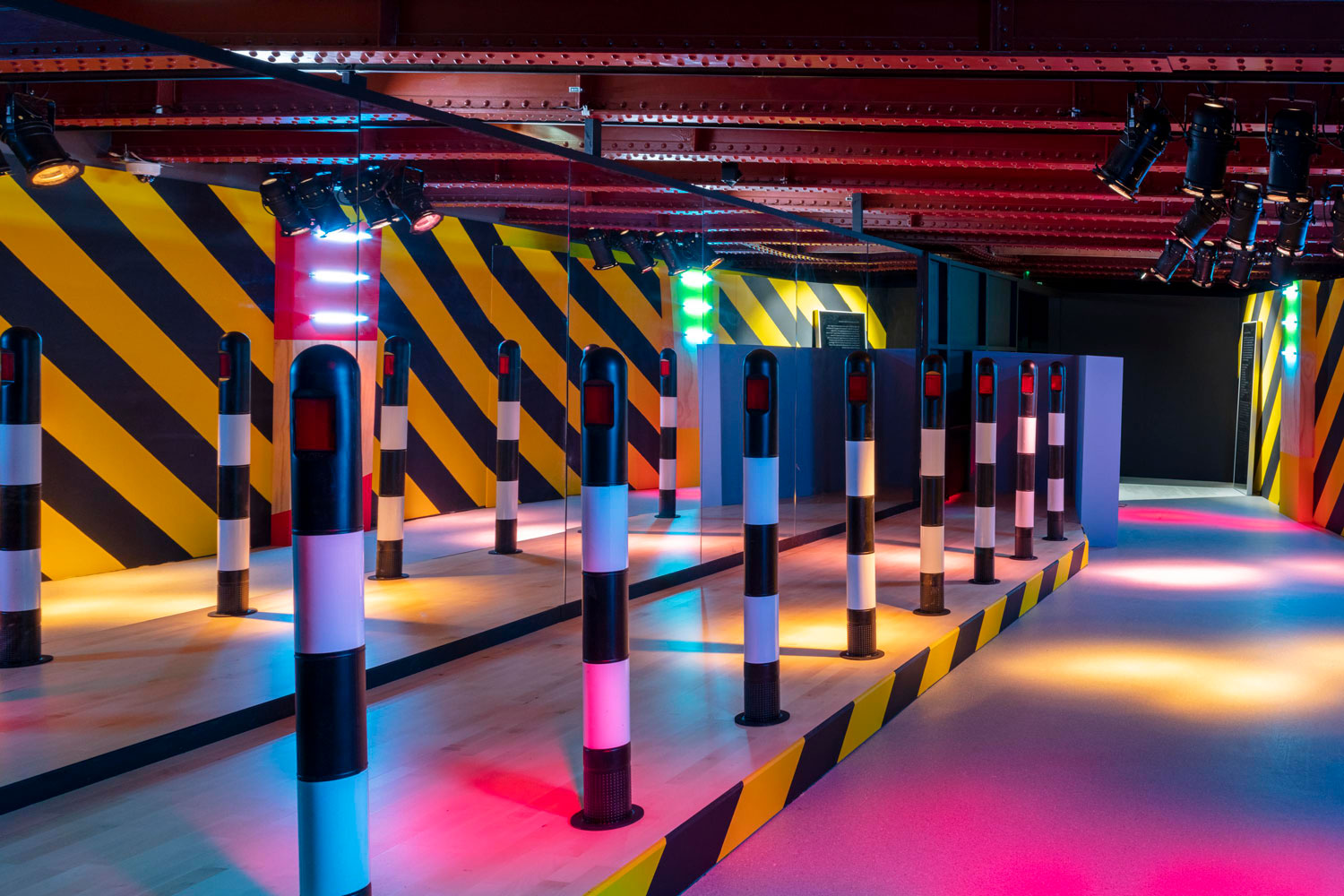
Science Museum Group © The Board of Trustees of the Science Museum
2 comments on “Use Hearing Protection: A Factory sample”
Comments are closed.
Having caught the Chelsea variant of this wonderful exhibition, I wasn’t sure how much more I would get from the Manchester trip, but as you can never have too much Factory in your life, we went with our daughter, thinking it would be a great introduction to the city and its art in her first term at uni there.
What a wonderful job you have all done. The extension and extra space really opened things up – the photos in particular I found very moving – and needless to say the reimagining of the Hacienda brought back many great memories.
While too young to have caught JD in the flesh, I have always enjoyed being able to say I saw New Order’s last gig there. Most importantly of all, it gave me the chance to pass the baton on. I have spent the last few days digging out all my old vinyl.
All those who felt that spirit of the time, know that however far the years place it from us, we can still touch it from a distance.
What a lovely comment to read, Steve. Thank you for taking time to make it. Everything that you say here is what I wanted the exhibition to do, when I was talking to Jon and Mat and planning how to expand the original version. My wish was to give those who don’t know much about Factory, or the Manchester the label grew from, an introduction to what the label was all about, and for those who are passionate about Factory to have something that surprised them as much as it stirred memories.
I hope your daughter is enjoying Manchester. I’m biased, of course, but it’s a great city to learn, work and play in.